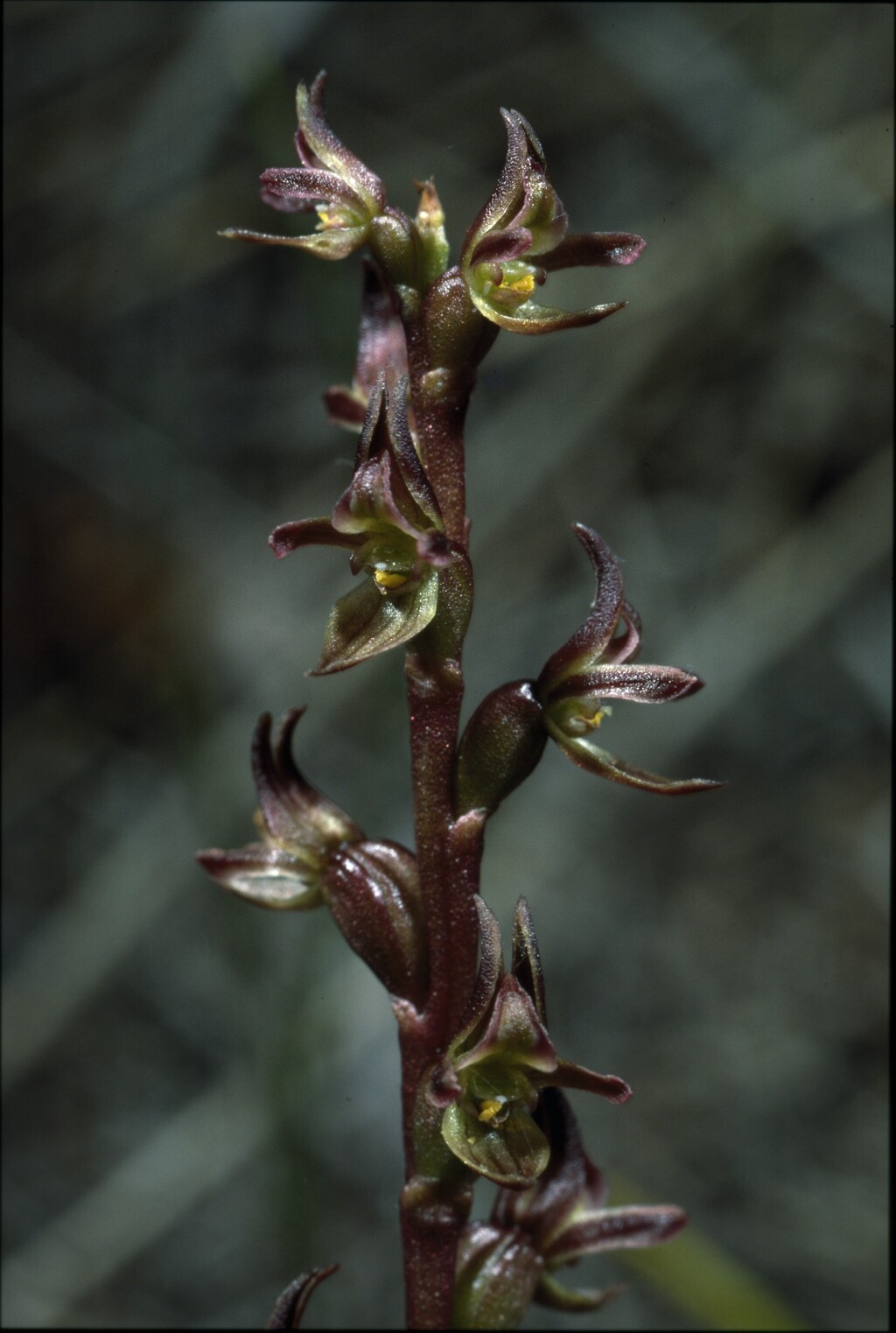Prasophyllum parviflorum
Nicholls Slender Leek-orchidFlowering stem slender, 25–40 cm tall. Leaf-blade to 25 cm long, 2–3 mm diam. at base, apex erect. Flowers 10–30, small, greenish brown to purplish, faintly perfumed, in a narrow spike 6–10 cm long; ovary obovoid, to 3 mm long; sepals 4–5 mm long, dorsal sepal ovate-acuminate, lateral sepals joined near base, lanceolate, falcate, recurved, not divergent; petals linear, 4–5 mm long. Labellum subsessile, erect, 4–4.5 mm long, recurved and constricted near middle, lamina variously coloured, margins entire; callus plate prominently raised, broad at base then tapered, extending almost to the labellum apex, glossy. Column appendages oblong, oblique, c. 1.5 mm long.
GleP, Brid, VVP, GipP, EGL, EGU, WPro. Scattered through near-coastal heaths in sandy loam or peaty soils east from French Island and apparently rare.
More westerly collections from grasslands in the Portland to Hamilton region, reputed to be of P. parviflorum, are possibly referrable to P. suaveolens, but are in need of study. Diminutive plants from the lower Glenelg River, Mt Richmond N.P. and Bats Ridges are also in need of study (see Prasophyllum aff. parviflorum).
Tasmanian plants formerly referred to P. parviflorum are now treated as a distinct, apparently unnamed, species.
Bates, R.J. (1994). Prasophyllum. In: Walsh, N.G.; Entwisle, T.J., Flora of Victoria Vol. 2, Ferns and Allied Plants, Conifers and Monocotyledons, pp. 869–886. Inkata Press, Melbourne.
 Spinning
Spinning